
How Jasmine’s Caribbean Cuisine Brings the Best of the Islands to New York’s Restaurant Row, in Five Dishes
When Jasmine Gerald opened her restaurant in the fall of 2020, she wanted to create an escape, a place where pandemic-weary New Yorkers and the trickle of returning tourists could “get away from the madness,” she says. “For me, it was about trying to bring New York City back.”
In opening Jasmine’s Caribbean Cuisine in the heart of Manhattan’s Restaurant Row, near Times Square, the first-time restaurateur has been challenged with drawing foot traffic to an area that usually relies on tourists and office workers for business. For a time, tourists finally started returning to the neighborhood again last year, before the Omicron wave hit in late fall.
But, as Gerald says, “I’m big on walking in faith and not fear.” She grew up around the restaurant business — her mother ran a French restaurant in St. Thomas, where Gerald grew up — and so when she decided to open one of her own, she brought on longtime friend Basil Jones, the Jamaican chef who made his name in New York for popularizing Rasta pasta.
The origins of Rasta pasta, a penne dish infused with Jamaican jerk spices, are as varied as the many versions of the dish that you can find, but most people credit Jones for creating the creamy version that we find most often today. Jones popularized the dish while he was a chef at Footprints Café in Brooklyn in the early aughts.
“I came up with Rasta pasta when I was working at Sans Souci Hotel in Ocho Rios, Jamaica. I was trained in cooking Italian and French cuisine, so one day I decided to combine Italian, French, and Jamaican ingredients and came up with this dish,” Jones says. “I grew up in a Rastafarian culture where most of the food they ate was vegetarian and colorful — that’s how the name Rasta pasta came about. Honestly, I didn’t know it would become so popular, but I knew it was an amazing dish, just by the taste, the flavors, and the customers’ reactions.”
And yes, Rasta pasta is on Jasmine’s menu, although here, it’s called “jazzy pasta,” along with a variety of dishes that span the Caribbean, from Jamaica to Antigua, Dominica, and Trinidad. There are empanadas, nodding to the Spanish influence in the region, and roti, representing Trinidad and Guyana. “We have rice and peas, stewed chicken, curry chicken, festivals… We wanted food that made people feel like, ‘I’m at home,’ or ‘this is something that my grandmother would make,’” Gerald says.
Ultimately, Jones hopes that the cross-section of the Caribbean he’s serving up at Jasmine’s can help popularize island fare with new audiences. “The combination of tropical herbs and spices we use brings out unique flavors,” he says. “I would like Caribbean cuisine to be available all over the world.”
Along with the colorful, pastel-accented décor, the restaurant’s cocktail list adds to the festive atmosphere, with original twists on popular island cocktails like rum punch, the piña colada, and the mojito. When Gerald opened the restaurant over a year ago, “It was a time when people weren’t really traveling,” she says. “When they walked in here they felt like, ‘Wow, I’m in the Caribbean.’”
Here, Jones takes Resy through five of the standout dishes on their transportive menu.
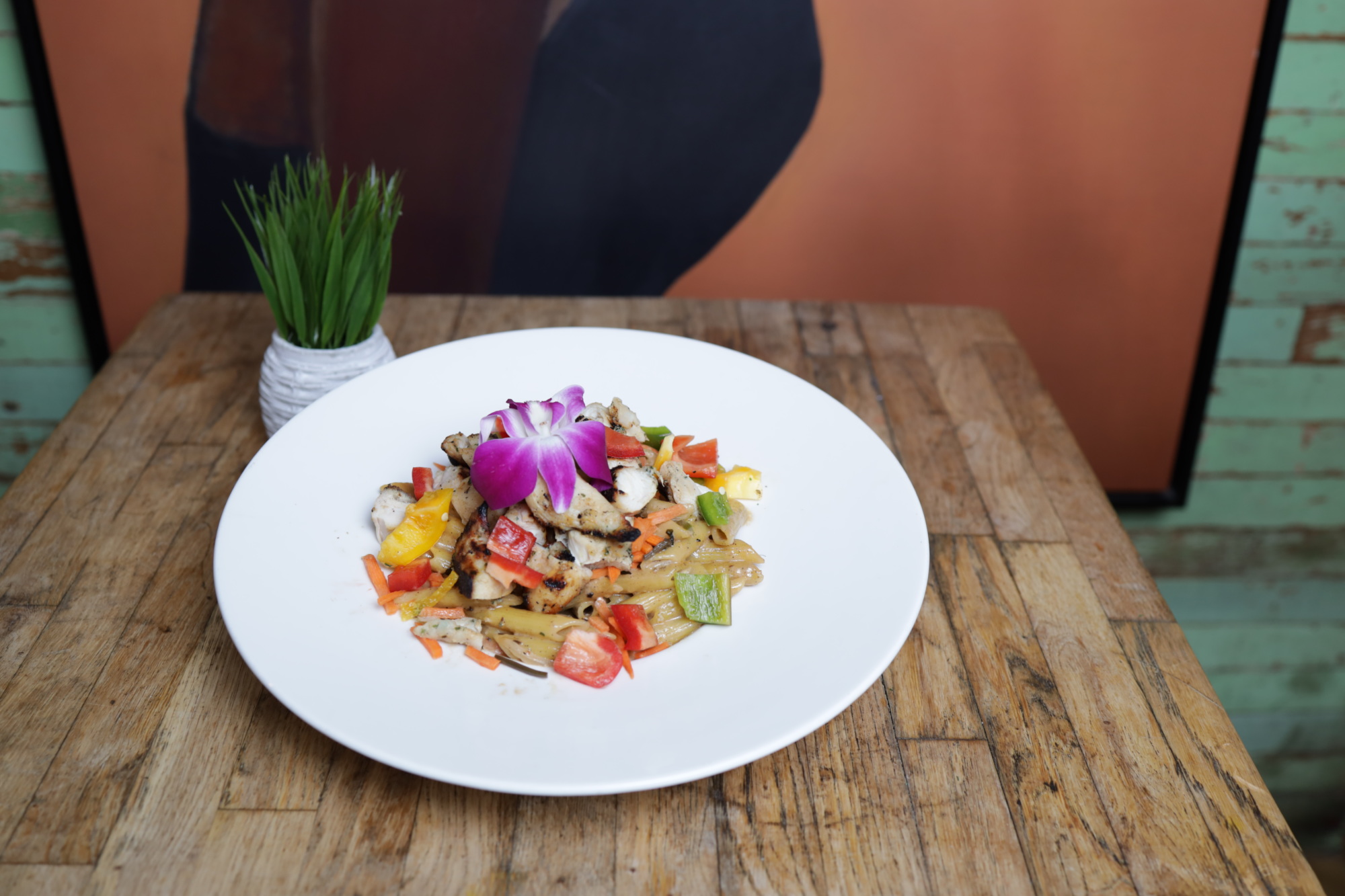
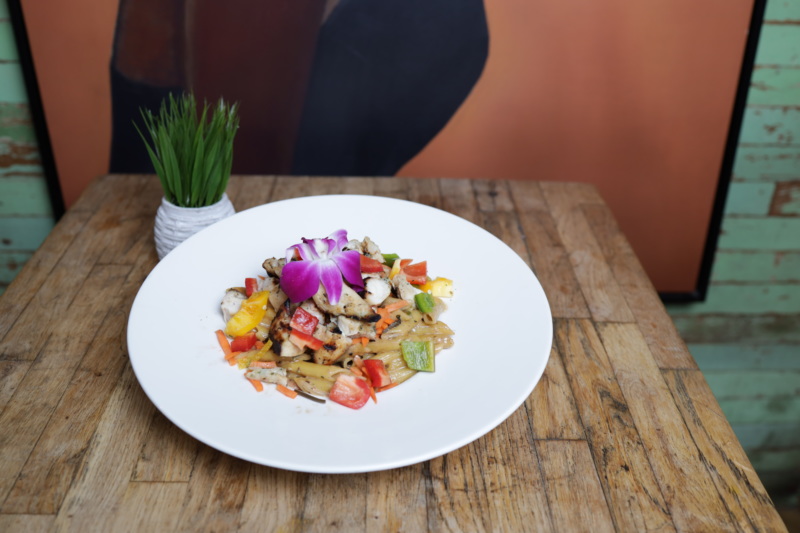
1. Jazzy Pasta
“People from all over like the famous jazzy pasta. It’s infused with a variety of different herbs and spices. We start it with garlic and onions sauteed in olive oil. And then when that aroma starts to hit the nostrils, we add heavy cream. And when the heavy cream comes to a boil, then we add the pasta. As soon as the pasta starts to get the flavor of the sauce, then we add some jerk sauce, and then a variety of bell peppers: red, green, and gold because that’s the colors of the rainbow. And then we add carrots, and then we top it off at the end with some fresh basil and Parmesan cheese. When you get the first bites of that dish, [you get] all the peppers and herbs, and the crunch of the al dente pasta. But when you taste the sauce, it’s such a unique taste. It carries that dish, basically. There’s nowhere else you will go and find such an infused pasta dish.”
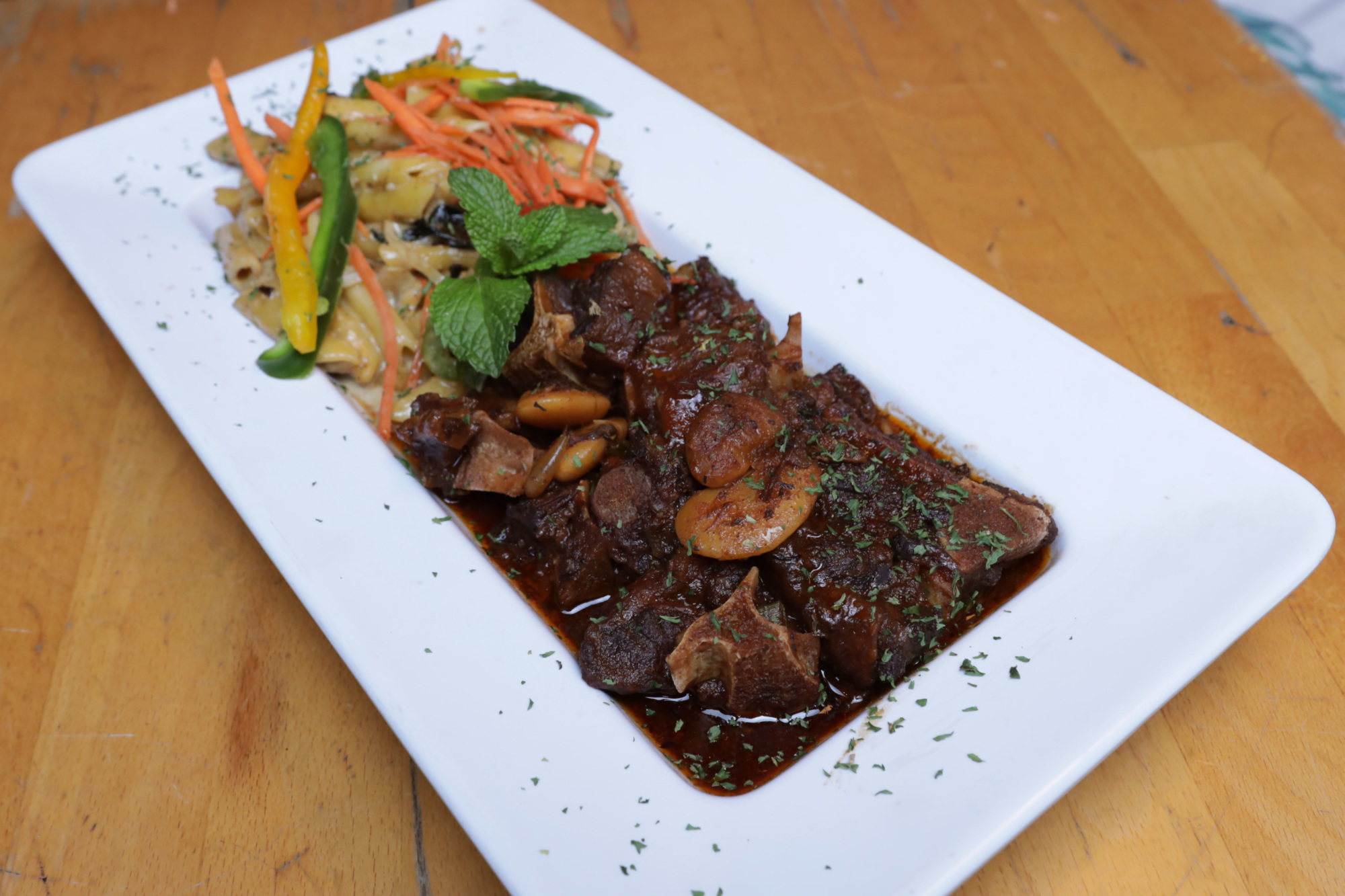
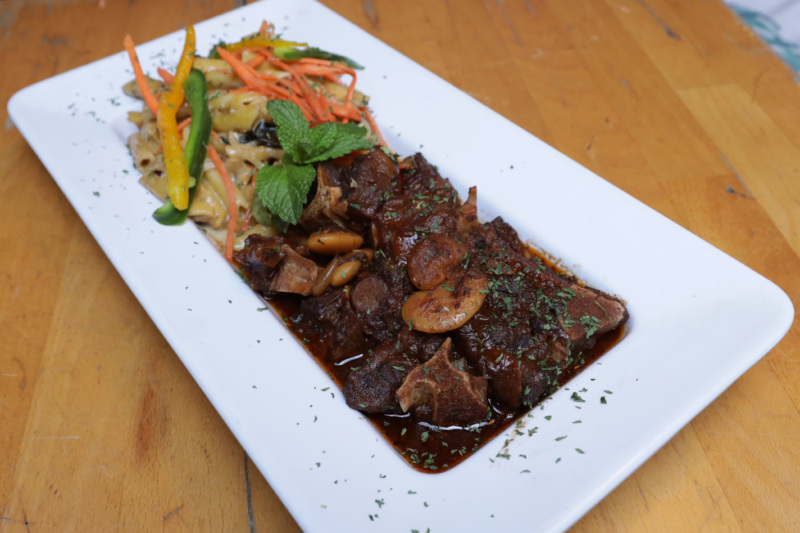
2. Oxtail
“Oxtail is one of our biggest sellers. They call it oxtail but, you know, it’s the tail from the cow. We marinate it for a day or two in advance, and we put some tropical herbs and spices on it: salt and pepper, garlic, onions, thyme, scallion, pimento (which is allspice basically), and ginger. We let it marinate in those spices. And then we cook it to perfection. We add the same ingredients again when it’s cooking, and then we top it off at the end with some butter beans. The butter beans kind of bring it together, to give it that nice thick flavor. The ginger and allspice give it a nice flavor. All these things, they’ve got to be balanced. When we’re cooking it, we’ve got to know exactly the tastes that the customer is looking for. We don’t want to make it one way today, and tomorrow a different way.”
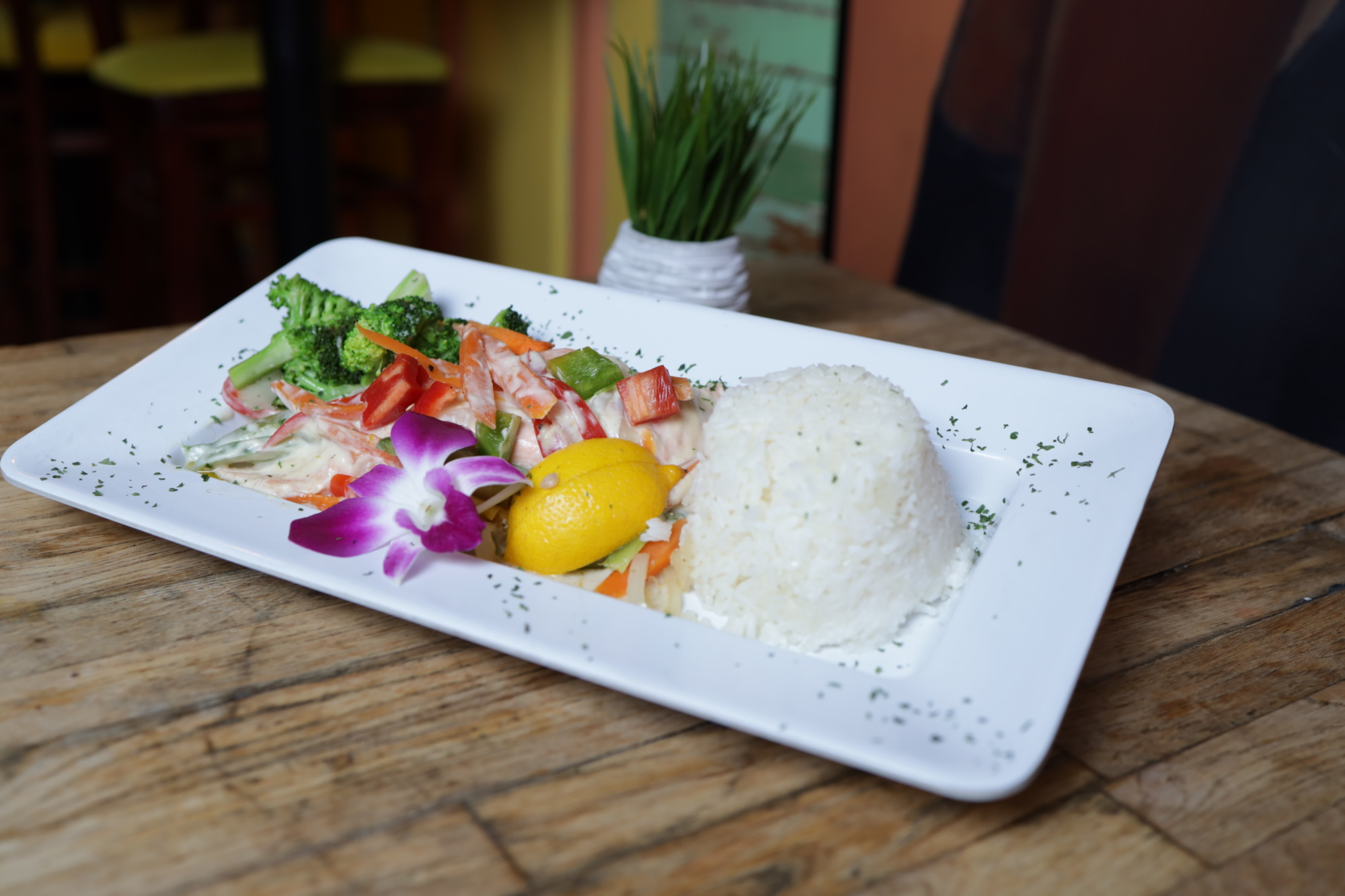
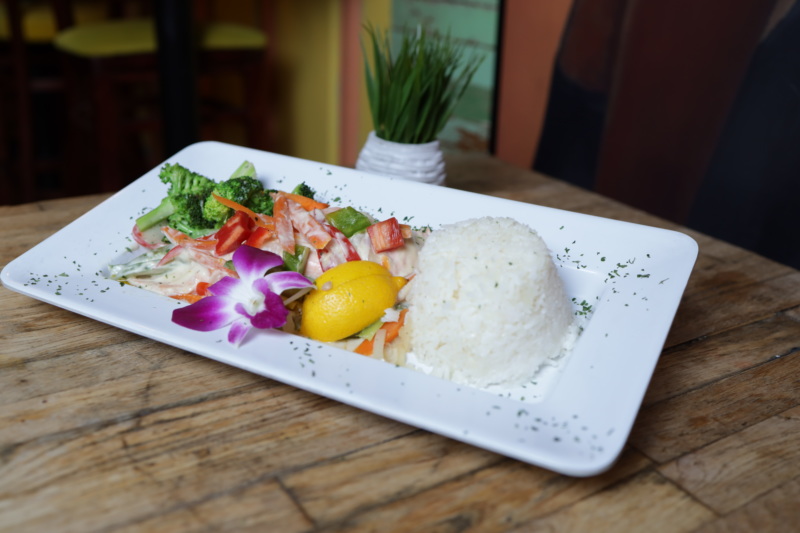
3. Coconut Salmon
“Some countries call this coconut salmon ‘rundown.’ We start out with sautéing the scallion, coconut juice, garlic, thyme, ground allspice, carrots, peppers, we put a tip of brown sugar in it to get that nice semi-sweet flavor. Then we add the marinated salmon to get the flavor of the ingredients, and the coconut cream for everything to combine. What really gives you that nice, unique flavor is the coconut. We use coconut cream, and we use coconut milk. We combine both of them together. One is kind of richer than the other, so we’re trying to get that rich, velvety sauce from those two [types of] coconut combined together. When you taste that sauce, you want to drink it. Customers are always asking for more sauce because they want to put that sauce on the rice.”

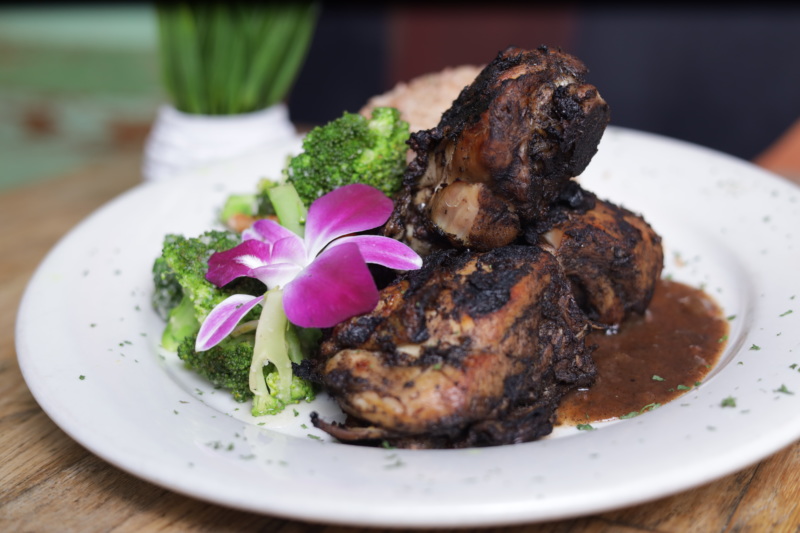
4. Jerk Chicken
“Jerk chicken is a unique, universal dish. This dish goes way, way back in the days when Arawak Indians used to live in Jamaica, combined with the Africans. To marinate their chicken, they would get all the tropical spices: the allspice, the vinegar, the scallion and the thyme, scotch bonnet pepper, the ginger. And they would make a rub, and put it on the chicken and let it marinate for as long as they chose to. And then they would put it on an open fire on a grill, and let it smoke to get that nice, smoky aroma and flavor from the chicken. So, we don’t have an open fire, but we carry out the same concept. When our chicken comes in, we marinate it for days. And then we add a little brown sugar, or molasses, or both at times, to kind of tone down the heat of the scotch bonnet pepper. And then we put it on the grill to get that smoky flavor. And then we slowly cook it in the oven.”
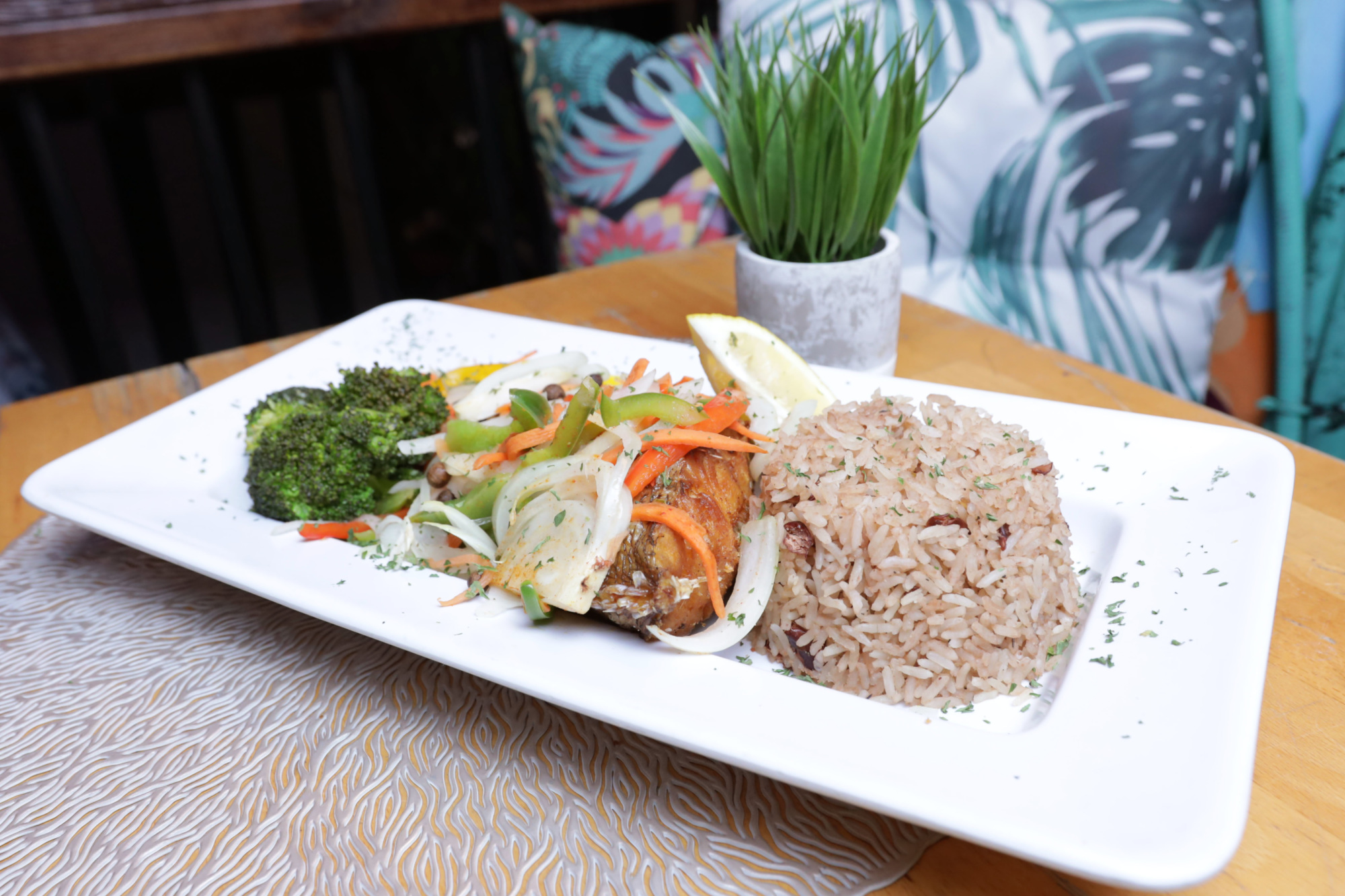
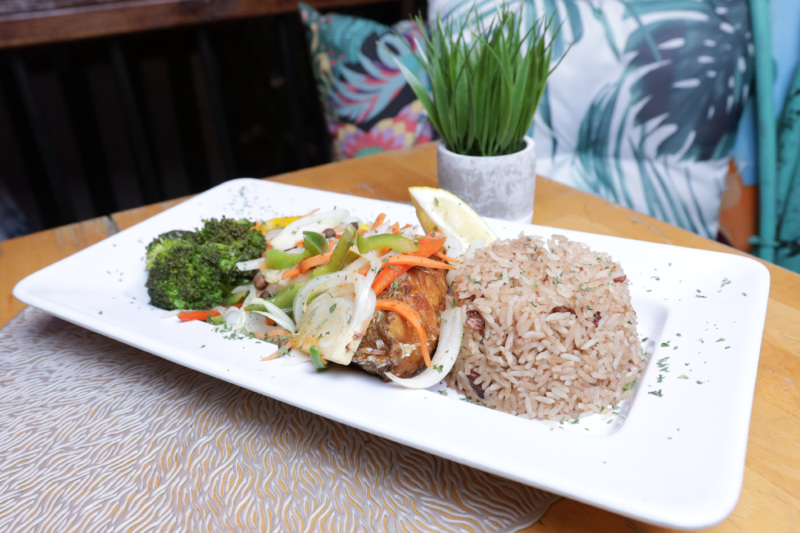
5. Escovitch
“The escovitch snapper is another one of our big sellers. Escovitch is a marinade composed of scotch bonnet pepper. Let me say this, people from most of the Caribbean islands, they like peppers. So, in a lot of our dishes, we use pepper. We don’t overburden them with pepper unless the customers say, ‘Oh, can I get extra peppers.’ We have a marinade, which is comprised of onions, carrots, red and green and yellow bell peppers, a lot of allspice berries, vinegar, a tip of salt and pepper, and also some brown sugar. We let that sauce marinate for days. When we get our snapper, we clean them, and season them to perfection. And then when somebody comes and orders it, we pan-fry it, and then we put it in the marinade, and serve it with the escovitch sauce. Some of the Spanish-speaking islands call this ceviche.”
Jasmine’s Caribbean Cuisine is open Tuesdays through Thursdays from 4 to 10:30 p.m.; on Fridays from 4 to 11:30 p.m.; on Saturdays from 2 to 11:30 p.m.; and on Sundays from 2 to 10:30 p.m.
Lauren Vespoli is a New York-based freelance journalist who has contributed to The New York Times, Vox, Atlas Obscura, and more. Follow her on Twitter. Follow Resy, too.
Discover More

Stephen Satterfield's Corner Table















